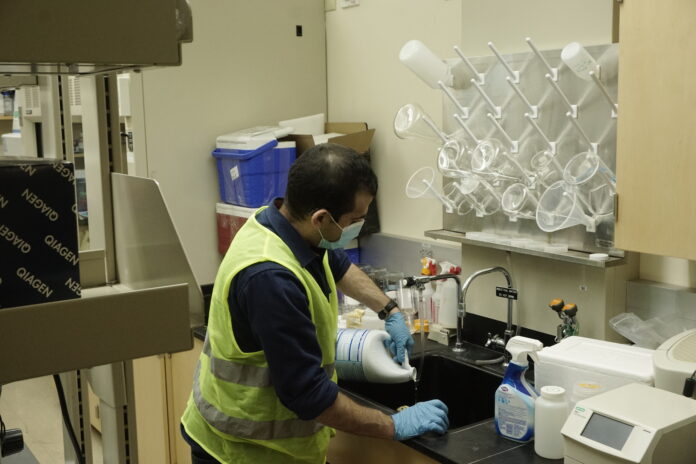
While Nevada’s COVID-19 cases hit their lowest point in months, UNLV’s wastewater surveillance program reports an increasing amount of the virus in their most recent samples.
According to Nevada Health Response, the current new daily confirmed cases in Nevada sits at 99, with 15 daily new probable cases. This is the lowest case number in the state since the recent peak in mid-January.
Despite the low positive cases, Edwin Oh, head of UNLV’s wastewater surveillance program, reported consistent increases in the most recent findings of his team, particularly of the BA.2 subvariant.
“Even though we have quite a high level of BA.2 circulating within southern Nevada,”Oh said. “We’re not seeing a lot of cases show up in the hospital with BA.2. I think the current numbers are something like 30% of humans who are infected right now are being infected by BA.2. I think that’s a gross underestimation of how much BA.2 is really circulating, and the reason I think that is because our wastewater is showing us that around 50,60-70% of communities here have BA.2 circulating in the community.”
Oh noted that an immediate rise in wastewater viral levels is not immediate cause for alarm. Due to the limitations of wastewater testing, viral numbers should not be observed one week at a time for conclusive results. According to Oh, accumulated trends over two or more weeks is where the wastewater analysis finds its strength.
“One thing for sure,” Oh said. “If we increase in wastewater viral levels over two or three weeks, in one to three weeks later, we will see the number of people with a certain infection at hospitals, that’s for sure. That’s why we want to be observing trends.”
As for the current numbers, Oh suspects a lower infection rate due to enhanced immunity within the community.
“The reason why we might not have a lot of infections,” Oh said. “Is that many of us might already be immune to some of these variants that are emerging either because of vaccinations, or because of recent infections.”Though the current threat may be mitigated due to immunity, Oh and his team continue to monitor southern Nevada wastewater, and their findings are now published on the new NV EMPOWER Program online dashboard.
